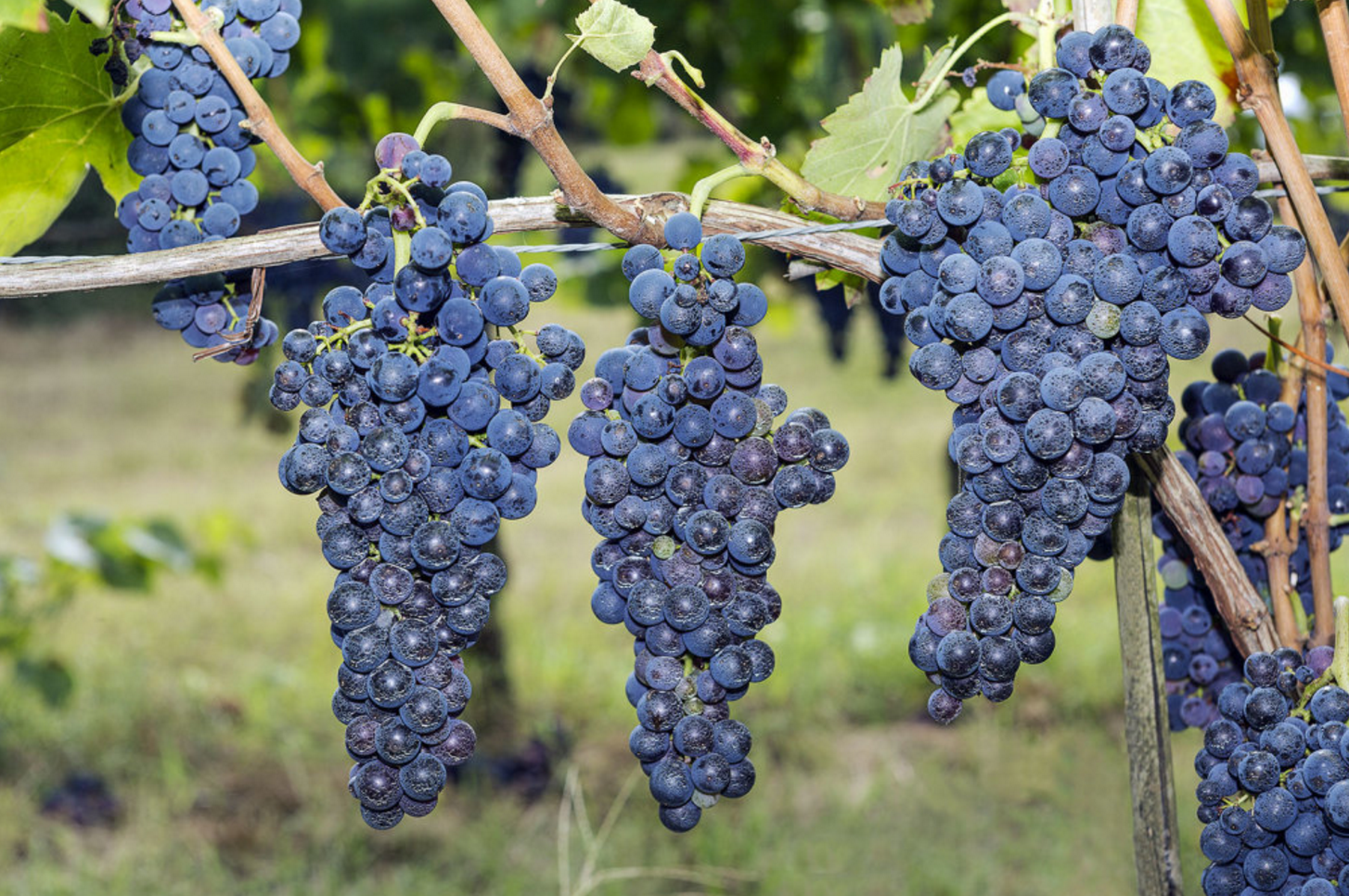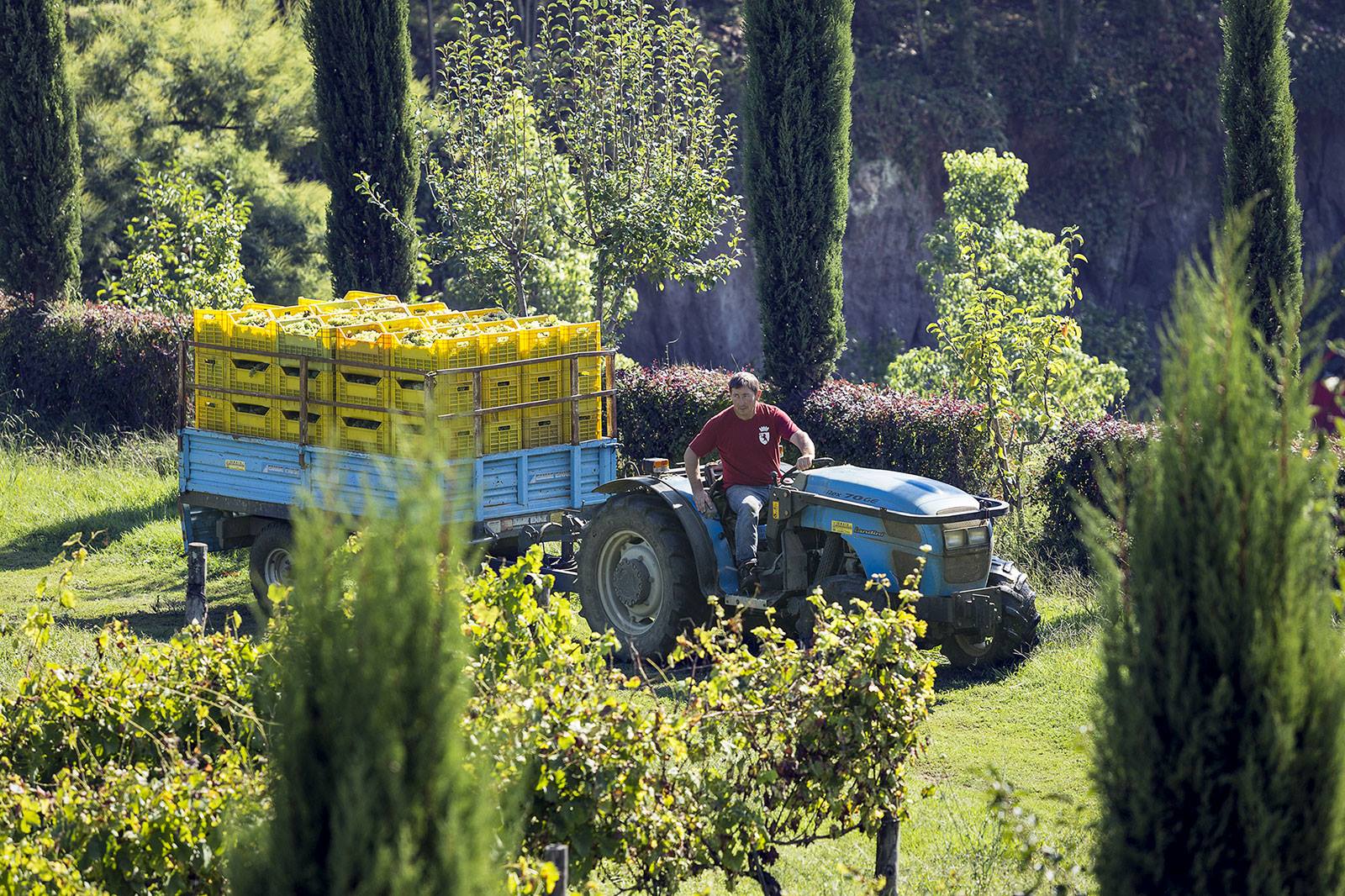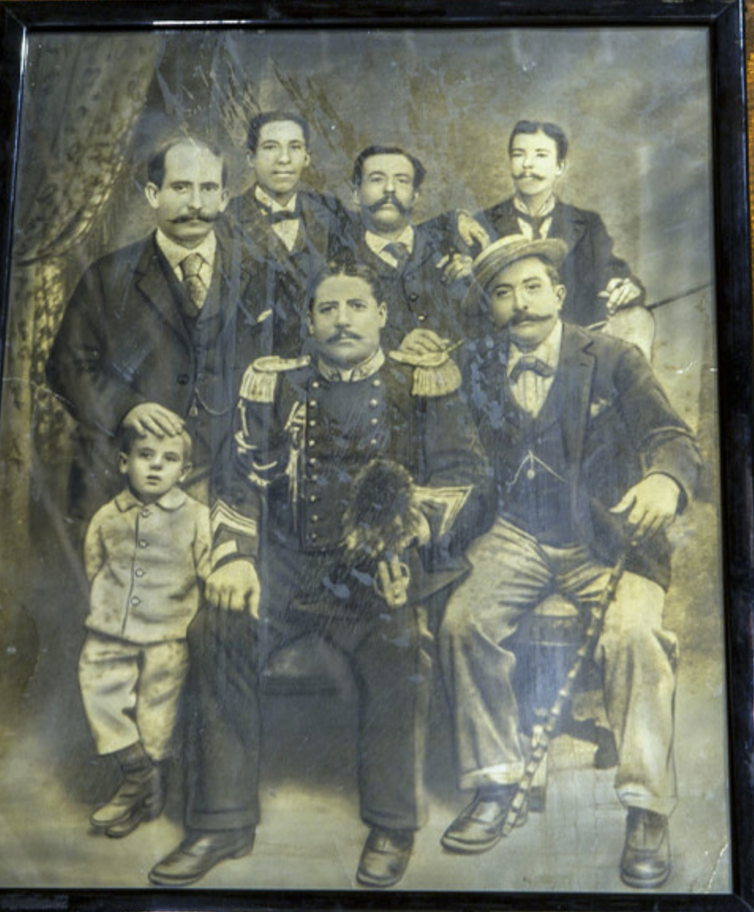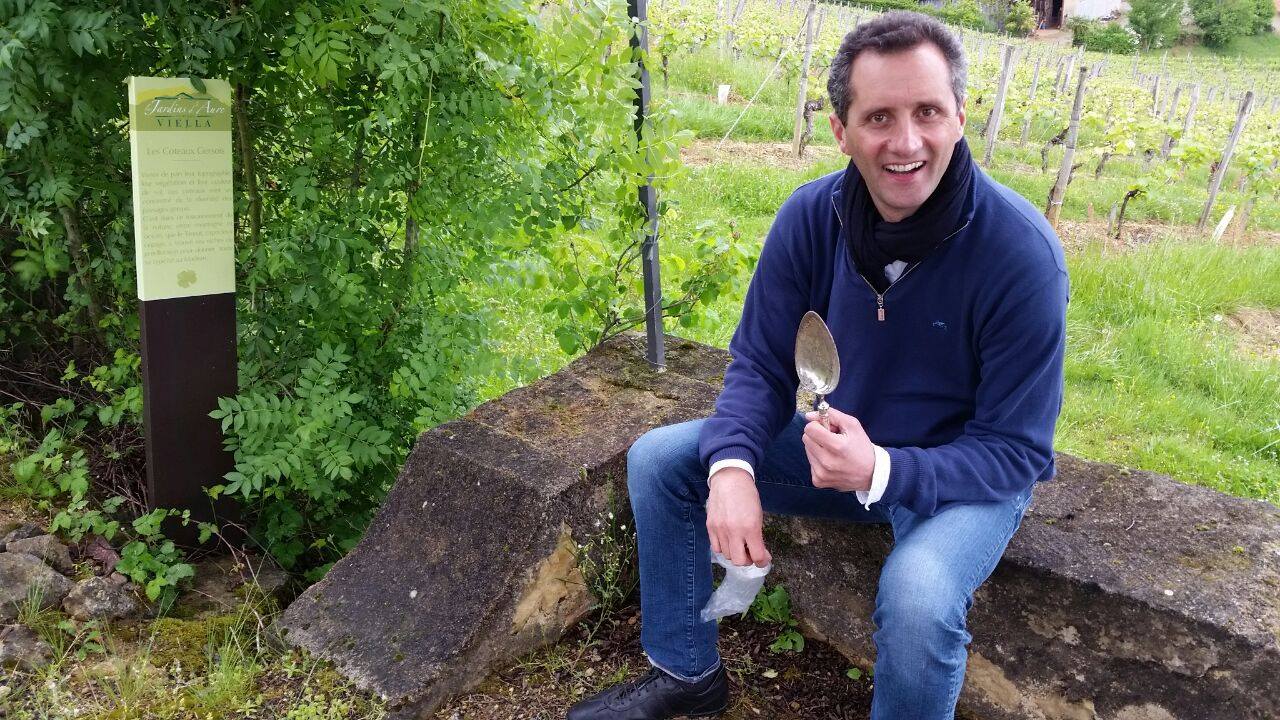
Campania is the region just above the boot at the bottom of Italy. Though not one of the better known wine regions, Campania has a rich, interesting relationship with the grape which started with the Greeks and continued through the Romans. The region at one time was home to hundreds of indigenous grape varieties. Most have disappeared. Today it is better known for great pizza, Mozzarella di Bufala, and real al dente spaghetti. A group of passionate artisan winemakers are focused on reviving the almost extinct varietals and reestablishing Campania's reputation for wine.
Grape Collective talks to Massimo Alois of Fattoria Alois in northern Campania about the influence of the volcano Vesuvio, the evolution of wine in the region and his family's quest to revive their forgotten grapes.
Christopher Barnes: How is Campania evolving as a wine region?
Massimo Alois: I think in Campania all the vintners have done a great job in the last 20 years. It was Campania that used to make wine for just selling in northern Italy. Now, in the last 20 years, you find a bunch of serious vintners. They are really focusing on the indigenous varietals such as Fianno, Greco, Aglianico from Taurasi.
In northern Campania, you find those indigenous varietals that the Bourbon Kings actually planted in the royal vineyards such as Pallagrello Blanco and Pallagrello Nero. This is quite a weird thing because the Bourbon Kings, they didn't plant the Aglianico which was the most widely known grape, but they planted the grapes that came from northern Campania such as Pallagrello Bianco and Pallagrello Nero. All the historians are wondering why.

What are the characteristics of some of these indigenous grapes?
I would say, for example, we have the Casavecchia which is a pretty unique grape. Casavecchia is a grape which doesn't produce a lot. That's why it became an obscure grape because no one wanted to plant it and grow it because it's not a money maker. That's a grape which produces one pound per plant because of the inability of the stamens which are contained in the yellow, flowering berry to be properly pollinated.
During the flowering, most of the males are hemophroditic which means that they are smaller than the female. They are not able to jump over the female, and pollinate that. Of course you've got bees and wings which help, and most of those males that are taller than the female that can do their job. Fifty percent of those are not able to do their job. That's why they wither. They just get burned, and they fall down. So the batch is not a good looking batch. It's kind of a sparse, loose batch. It makes one pound per plant.
On the one side it's good because whatever you bring in to the cellar it's a pretty healthy grape. You don't have rot and moisture. On the other side, we make 85 hectoliters which is 11,000 bottles. We have almost five hectares. Usually, you make twice as much, three times as much.
You have to love the varietal to put in all the work.
These are those varietals which have just been brought back from extinction. Even the Pallagrello Nero, the Pallagrello Nero is really interesting. It's a bunch which is really productive. Whenever we see a double bud spur with more than a cluster, we just cut off one. Whenever we see on the cane a shoot with more than two or three clusters, we just cut off the second and the third because we try to keep the hilt down to three or four pounds per plant, no more than that. Compare to the Casavecchia, it's totally different. Casavecchia is full of color. It's full of tannins, silky tannins, but sometimes they are too much. That's why Casavecchia needs a little time to stretch it's legs, and age. The Pallagrello Negro is a little bit like Pinot Noir. It doesn't have color. It's pretty light, but it's full of fruit.

From a marketing perspective, how does Campania get recognized in the same way as some of the more famous Italian wine regions like Barolo or Montalcino. How do you get there?
I would say, Campania for sure is considered to be a minor area. It's like in France sometimes you have the Jura area. It's considered to be minor, or the Cahors, or the Maduron. For sure, this is a minor area compared to the Barolo and the Brunello areas. There are a bunch of vintners who are really serious, and are doing a wonderful job growing these marvelous grapes.
For example, you have Fianno that I think is one of the best wines. It can age for 20 years. I've got a bunch of friends that can easily open bottles which are 20 years old, and they are still green and fresh. I would say that in Campania, we don't do quantities compared to other regions. If you just compare to Emilia Romagna or Sicily where they make six, seven, eight million hectoliters. We make a couple. I think the quality of the wines, the average is really increasing a lot.
How does wine interact with food in Campania? Campania is very famous for it's cuisine.
It's very famous. The cuisine in Campania is fresh cuisine. If you compare our cuisine with the cuisine that we have in other regions, ours is fresh. We have Crudo when it comes to fish, or stemmed fish with a little olive oil, or you have the cherry tomatoes with basil and spaghetti. You have for example, something which is not that fresh but it's pretty unique. In Campania, the genovese is made out of onions. It's a sauce made of onions. It's called genovese. It has nothing to do with Genova. Just because a chef for a captain in a vessel used to make this sauce for his captain, made out of onions. I think when it comes to our cuisine, I would say it's fresh. For example, mozzarella. We have the water buffalo mozzarella. The caprese is a typical dish from Campania. It's chopped tomatoes with mozzarella. This is another fresh dish. I would say that all our cuisine, it's fresh.
Let me tell you that on the other side, the whites from Campania are considered to be important wines. Campania, nowadays, is considered to be a region for making whites rather than reds. That's pretty strange because we have pretty interesting reds. It's more and more considered to be a region for making white wines.

Tell us about the history of your estate.
We started 30 years ago. My father got involved in a project for resurrecting, reviving all the indigenous varietals that the Romans and the Bourbon Kings were cultivating. The Bourbon Kings were always competing with the French two centuries ago. They could not stand the fact that the French used to bring their own bottles down south. They actually were related to the French, so they were always in relationship with these guys. They decided to plant a bunch of different varietals. In their royal vineyard, they planted two pretty indigenous varietals. A bunch of those came in from Sicily because they were the kings of the two Sicilies, Reino de la Esquisochivia. Two of those were real indigenous. They were coming from northern Campania, Pallagrello Bianco and Pallagrello Nero.
Then in 1860, Italy was united. Bourbon had escaped. Whatever they did was destroyed by the kings who came later of course. Then phylloxera, during the Fascist Period during the '30s, it destroyed those vineyards. Just a few vineyards survived, up on the hills, at certain altitudes. That's why 30 years ago, the University of Florence in Naples came down south. It was financed by the university. They received the money from the government, the Minister of Agriculture, in order to revive all the indigenous varietals native to northern Campania.
My family got involved because they started regrafting all these indigenous varietals in the area where we are, and they finally found these big, pre-phylloxera vines up on the hills. They began to cut things, and they restarted the repropagating them. My father bought a piece of land, he grafted a bunch of these weird, obscure varietals.
What is the terroir like in Campania?
The soil is affected by the Mount Vesuvius. You have a bunch of areas which are really volcanic. The area which we are in is Northern Campania. All the vineyards down the valley, down the plateau which is where we are, which is 20 feet above the sea level, is mainly volcanic. What we get is the ashes from Mount Vesuvius. Mount Vesuvius is a volcano which doesn't produce lava. It just erupts. It doesn't tell you when it's going to erupt. What you get, is the ashes. Throughout the years, the ashes from up on the mountains were dragged down to the valley because they are lighter than clay and limestone. All the vineyards down the valley, 20 feet on the sea level, they are all volcanic. Up on the hills, they are clay and limestone.
Rocky outcrop consisting of tufo (tuff) which derives from the violent volcanic eruption that led to the Campi Flegrei caldera collapse, that occurred 39.000 y BP. The rock is the well-known Campanian Grey Tuff also called Campanian Ignimbrite, a potassium containing alkali-trachytic volcanoclastite, which originated from the deposition of explosive volcanic products rich in alkali elements and potassium.
At the top of the rocky deposit all the decay and breakdown processes (physical and chemical alteration) that occurred for millennia on the surface rock by myriad factors (pedogenesis) led to the formation of a thick layer of soil rich in humus and chemical elements that make the area very fertile.
Then when it comes to the terroir, once again, Campania is a pretty hilly region. It's not flat. The climate, I think is really good for making whites and reds. I think it's good because it's a pretty temperate climate.
Are there different areas that are good for reds versus whites like Aglianico for example? Are they making just reds in one area?
I would say that the only two areas which have been identified for making just whites (rather than reds ) are inland (in the Irpinia area, southeastern Campania): 1)Tufo Area for Greco grape and 2) Lapio/Montevergine for Fiano. In the other areas you can easily find either reds or whites. Just to give you an example, in northern Campania, where we are, we grow down the valley (200 feet) Casavecchia grape (red); up at 600 feet both Pallagrello Bianco and Pallagrello Nero.

What is your personal philosophy of winemaking?
Our wines are normally considered to be straightforward. This is something we really care about. What we are trying to do is to preserve the identity of the fruit, the identity of the tannins. We try, rather than add something, we try to withdraw something which means we don't want to use new oak. We don't want to use French oak barrels. We try to use large format Italian casks.
What we're trying to do is to have wines which are always fresh. Sometimes they can be a little masculine. We try not to make wines that necessarily have to please our consumer's palate.
How has your winemaking evolved over time?
Just think about these varietals being brand new varietals. You don't have a reference point. Whenever you face a problem, you don't know what's going on. You don't have a literature which can tell you what to do. You have to figure it out every time. We have done a bunch of experimentations throughout the years. We changed our vinification practices many times. In the past we were using the provencial barrels, then we were just using the stainless steel. Sometimes we discovered that we made mistakes because a bunch of our wines tended to reduce themselves which means they tended to burn oxygen. The stainless steel doesn't really fit for that kind of wine. We switched on big, Italian botti.
I would say in the last 30 years, we really have changed so many times in order to find the perfect way of vinifying our grapes.
What about your viticulture? You're sustainable?
We are sustainable. We started 10 years ago. We don't have pesticides. We usually don't plow our vineyards because they are pretty fertile. Whenever we plow, they become more fertile. This is not good for the vineyards. We just mow the grass all the time. We are not using any pesticides. We just use a little sulfur and copper in a very limited quantity just because we are sustainable.
What we are doing right now when it comes to the training system, we are using the Guyot training system. A cane is 80 centimeters. We have just few buds, and few clusters in a cane. We are at the moment, whatever we are planting, it's the Guyot training system with an average of five thousand plants per hectare.
How many wineries are there in Campania?
There used to be pretty few, but in the last 20 years they really grew a lot. Now there are more than 200 wineries, and the majority of these wineries are really doing a good job. You can tell whenever you go in a winery that they really care about what they're doing. There is a pretty fair competition. Every single vintner is really caring about what he's doing. He wants to do a better job than his friend. When it comes to the winemakers, there's a pretty fair competition especially within those smaller vintners. In all those small size wineries there's a pretty good ambiance and good climate.
------
Find Fattoria Alois at Grape Collective - for a limited time a 25% discount will be applied to your purchase.














